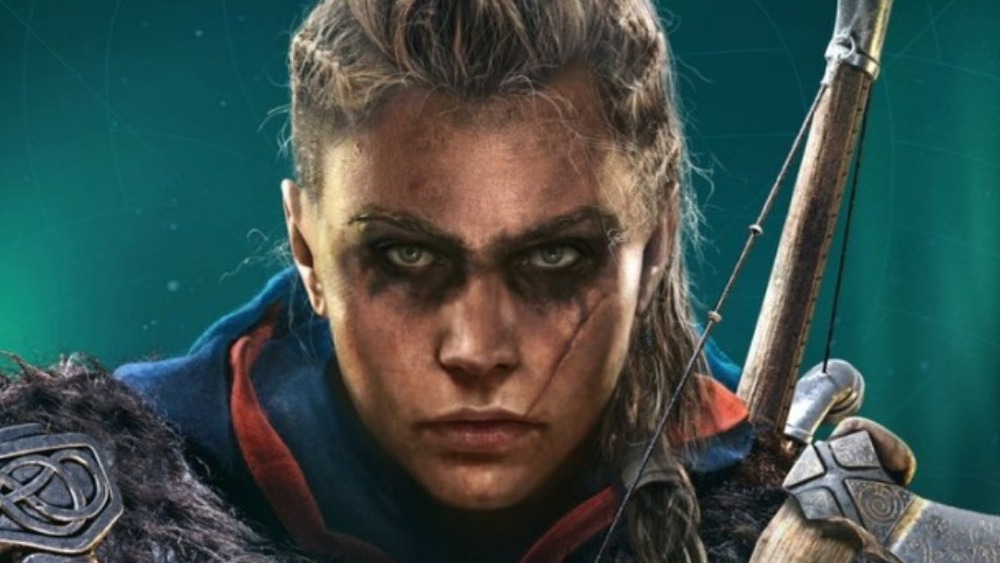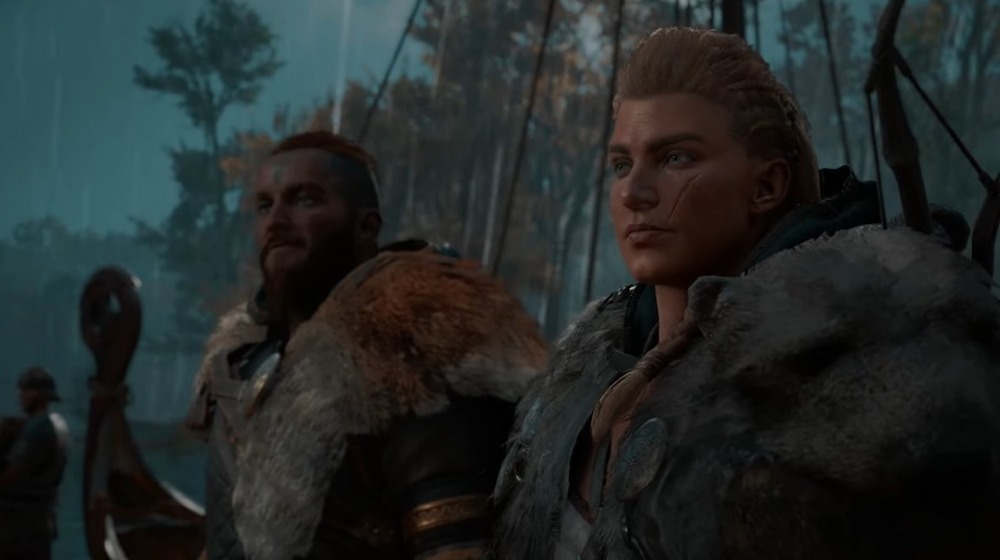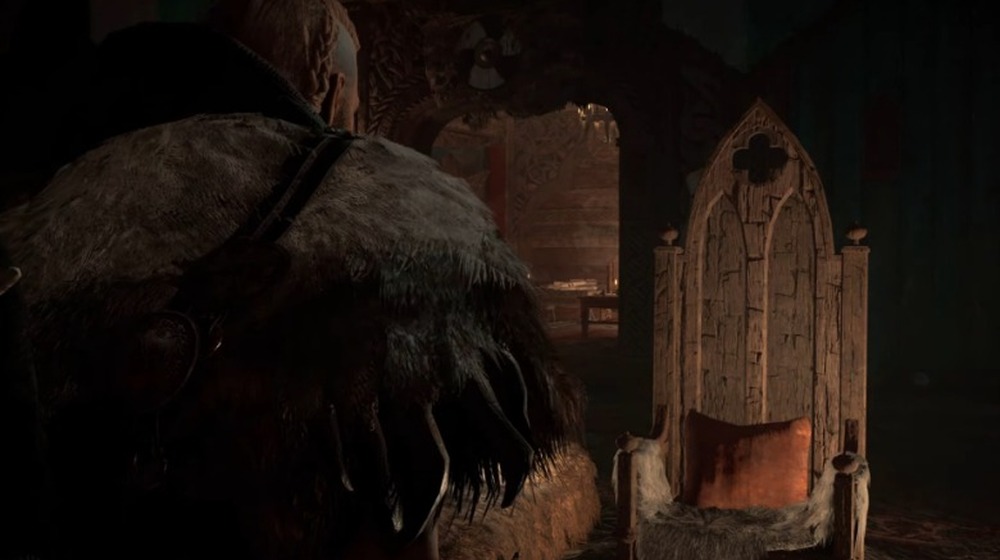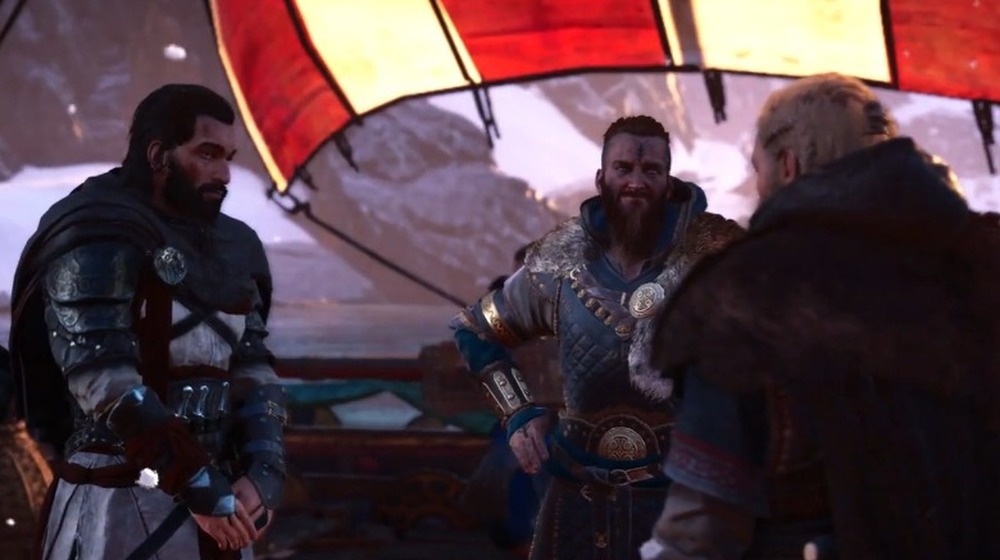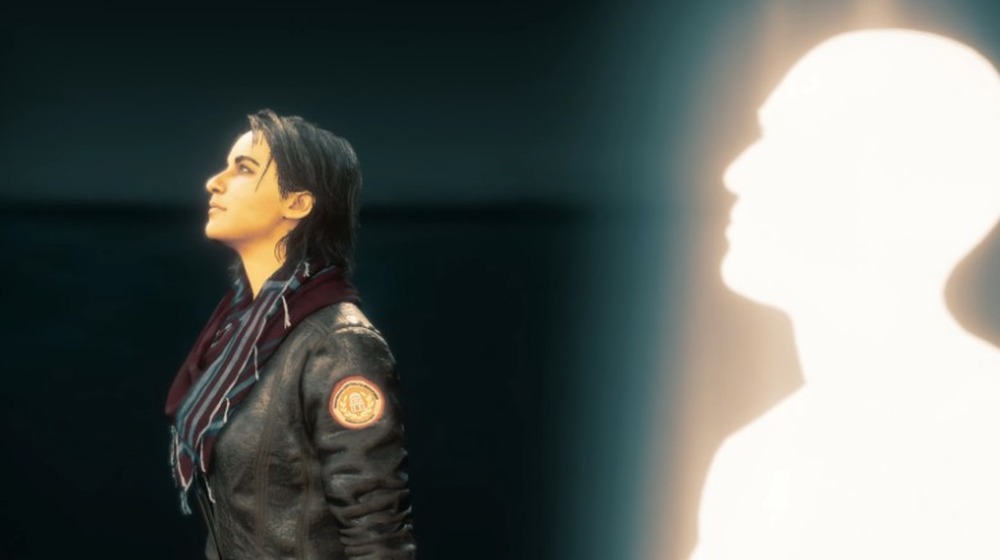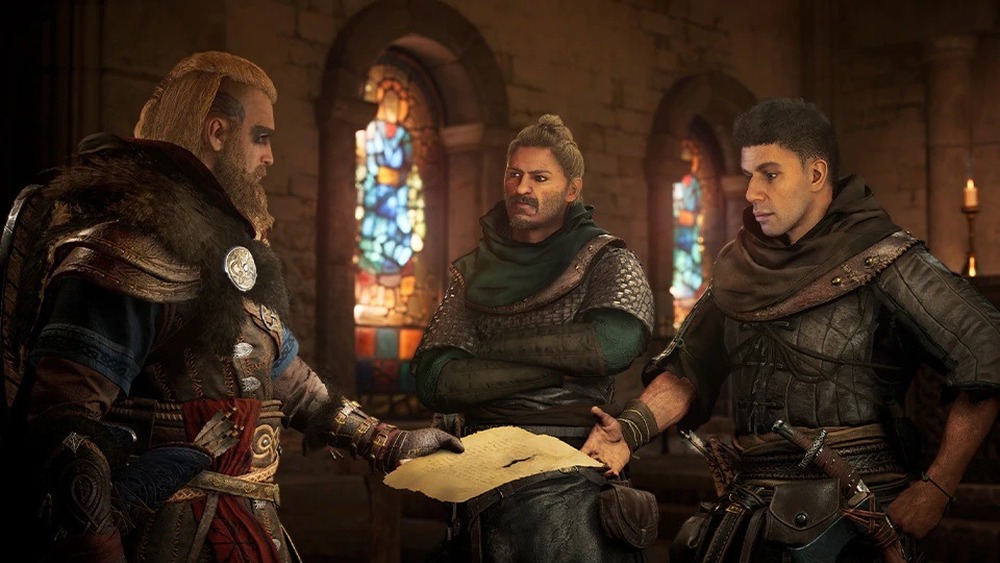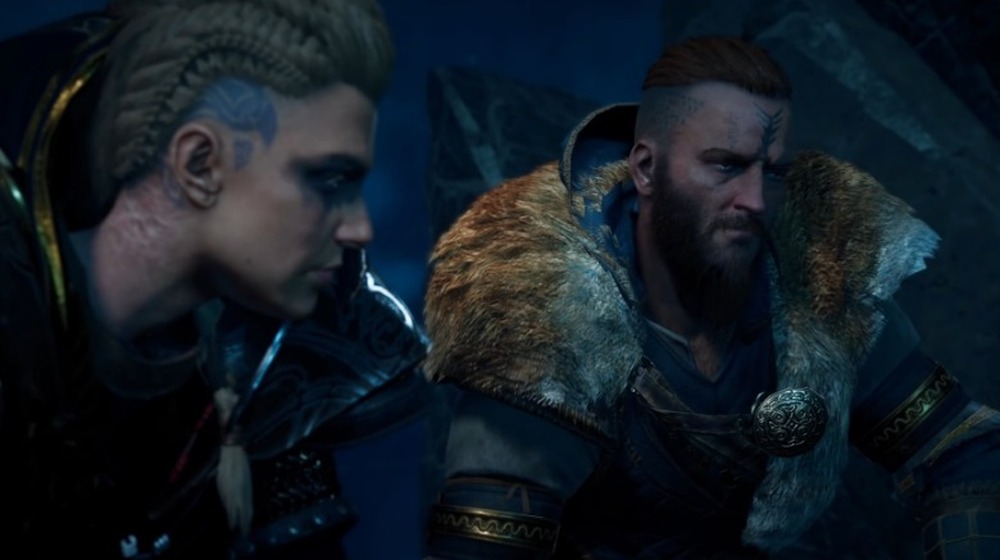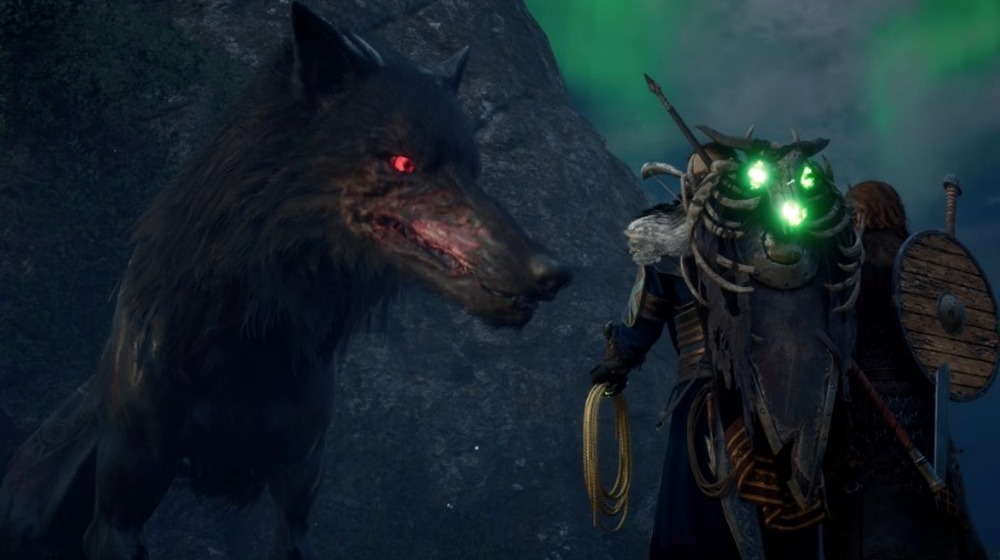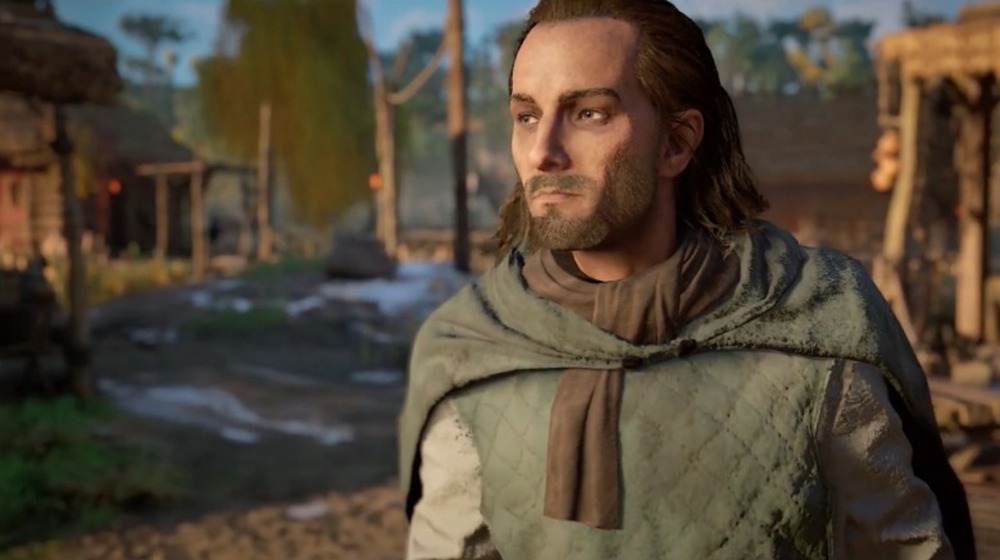Assassin's Creed Valhalla Endings Explained
Warning: This post contains major spoilers for Assassin's Creed Valhalla.
Assassin's Creed Valhalla is yet another entry in the Assassin's Creed franchise, but more than anything else, it is another Ubisoft game. That means, for better and for worse, Valhalla is a lengthy, open world title with a ton of activities, references to previous entries in the franchise, and multiple endings. Although, while critics generally love the game, many gamers would be hard pressed to wade through it for up to 80 hours and then go for another round just to see a different ending. No matter how good a game is, there's only so much audiences can take before they suffer from overabundance.
Moreover, Assassin's Creed Valhalla has more going for it than just an isolated story. The game's scriptwriter, Darby McDevitt, promised it would connect to previous Assassin's Creed stories, and the game lives up to that commitment. Valhalla's ending, epilogue, and several questlines reference the glut of franchise entries, including those that came before Assassin's Creed Origins soft-rebooted the gameplay loop.
If you don't have the patience to play Assassin's Creed Valhalla for over 100 hours to experience everything it has to offer, or you need a crash course on character arcs in the game, look no further. Here are the Assassin's Creed Valhalla endings explained.
'Good' ending
The first Assassin's Creed game set the tone for the rest of the franchise when it invented the iconic Hidden Blade and the Leap of Faith. That title also demonstrated you can't trust anyone in the assassin business. Assassin's Creed Valhalla continues that latter trend by revealing Basim — a friendly assassin — to be the surprise final boss, after Eivor and brother Sigurd spend the entire game trusting him. After narrowly avoiding death, the siblings take a breather and have a heart to heart chat that determines the ending you receive.
Throughout Assassin's Creed Valhalla, numerous trials test Eivor's fighting prowess and Viking spirit. The game's ending hinges on Sigurd's opinion of Eivor, which rests on making five crucial decisions: leaving materials that belonged to Sigurd's father in Norway; rejecting Randvi's romantic advances; refraining from punching Sigurd and Basim while in Oxenefordscire; handing Dag his axe after defeating him; and agreeing with Sigurd's ruling in the Gudrun v. Holger case.
If Eivor makes at least three decisions that favor Sigurd, he will return to Ravensthorpe with Eivor, but will relinquish the throne and make Eivor the new jarl. However, if Eivor makes more than three unfavorable choices, they can still salvage things by asking Sigurd to return to Ravensthorpe, which results in the good ending.
'Bad' ending
Assassin's Creed Valhalla technically has two endings, since the crucial changes that alter Sigurd's opinion of Eivor do provide consequences. However, these consequences are fairly minor since the finale of Eivor and Sigurd's adventure isn't the end of the game. Assassin's Creed Valhalla has a few post-game tricks up its sleeves to expand the general Assassin's Creed storyline, and increasing the divide between the good and bad endings would have given narrative designers a headache.
Since making decisions that Sigurd approves of results in a good ending, conversely selecting the opposite choices will result in a bad ending. These include: bringing materials that belonged to Sigurd's father to England; accepting Randvi's romantic advances; punching both Basim and Sigurd while in Oxenfordscire; kicking Dag's axe away after fighting him; and disagreeing with Sigurd's ruling in the Godrun v. Holger trial.
If Eivor picks three or more of these options — and/or tells Sigurd to stay when talking to him — then Sigurd will refuse to return to Ravensthorpe, which leaves the jarl's throne empty. Eivor doesn't want the throne, but Randvi convinces them to become the new jarl because, well, Assassin's Creed's story says Eivor became jarl. While minor details are fluid, key historical events in the franchise are set in stone.
Whatever happened to Basim?
Early in Assassin's Creed Valhalla, players are introduced to Basim and Hytham, two prototypical assassins from before the first Assassin's Creed's events. While Hytham is reluctant to share his order's secrets, Basim is eager. Too eager. Basim spends most of the game helping Eivor, but Basim's true motives are revealed when he serves as the game's final boss.
Most of Basim's character development unfolds at the end of Assassin's Creed Valhalla, when he tells Layla he used the Isu machine he's trapped in to communicate with her and study probabilities. He brought Layla to the Isu temple so she could decrease the intensity of the machine, creating a dangerous aurora borealis shield. However, Basim wired the control button to the function that would release him. When it's pressed, his mummified body falls directly on the Staff of Hermes, which restores him. The odds of all this happening seem infinitesimally small, but remember: Basim has studied probability since the 9th Century.
Thanks to context clues gleaned from an unlockable cutscene, the game reveals Basim is the reincarnation of the Isu Loki, and he thought Sigurd was the reincarnation of Odin, which explains Basim's actions throughout the game. Moreover, Basim's monologue during the epilogue implies that, going forward, the Assassin's Creed franchise will revolve around him — either as a protagonist or antagonist — and his quest to revive his family. Currently, the consciousness of his wife Aletheia resides in the Staff of Hermes, and his son Fenrir is hidden somewhere unknown. How Basim plans to bring them back is anyone's guess.
Layla's fate
In the original run of Assassin's Creed games, Desmond Miles served as a contemporary anchor who linked seemingly disparate stories. Layla Hassan filled a similar role in Assassin's Creed Origins and Odyssey, and does the same in Valhalla. Given in-game events, though, Valhalla might be her last appearance.
Layla spends most of the game in the Animus, and only leaves to wander around the cabin. Nothing of note happens to Layla except during the beginning and the end of the game. During the opening, Layla exits the Animus and states she found Eivor's skeleton via an anonymous tip that hints it could solve the aurora borealis problem. At the end, she receives a crash course on Desmond Miles and visits the Isu temple Eivor and Sigurd found. That's when things get a little crazy.
When Layla enters the Isu simulation machine, she learns Basim contacted her by tapping into the internet. When she frees him, she unwittingly traps herself. Given this knowledge, Valhalla implies Basim was manipulating Layla since the events of Origins. It's not all bad news, though. Layla has company in the form of a mysterious figure known as The Reader, who might be Desmond Miles. They are keeping busy, using the Isu simulation machine to examine hypothetical timelines and prevent another oncoming catastrophe. With luck, they will return in the future, complete with apocalypse-canceling info.
Eivor's destiny
Eivor, like many characters in games with multiple endings, is a blank canvas. In one Assassin's Creed Valhalla playthrough, Eivor might serve as an honorable Viking. In the next, they could play the part of a vainglorious hog. Regardless of choices, Eivor spends the game making allegiances and enemies with local dukes and lords.
However, Eivor is plagued by two important internal struggles. One is a prophecy that they will betray Sigurd, and the other is All-Father Odin himself. Every so often, Eivor experiences visions of Odin that try to make them choose glory over honor. If Eivor heeds the advice of the Norse god of wisdom and knowledge, players will receive the bad ending. But if Eivor can resist Odin's whispers, gamers will receive the good ending. Regardless of choices, Eivor encounters Odin one final time in the Isu simulation when he tries to take credit for Eivor's victories. However, Eivor denies this and realizes that the glory Odin offered was as false as Odin's godliness.
Context clues throughout the game, especially the unlockable cutscene, reveal that Eivor is the reincarnation of the Isu Odin and that the visions have been him trying to assert control. Moreover, while in-game choices don't severely impact the ending, they demonstrate Valhalla's main theme of destiny. Eivor would always betray Sigurd, whether intentionally (e.g., siding against him in court rulings, which the player can control) or unintentionally (e.g., costing Sigurd his position as jarl, which the player cannot control).
Sigurd's story
Unlike Eivor, Sigurd isn't a playable character. Gamers cannot determine his path, so he experiences an arc.
At first, Sigurd is a proud and honorable Viking ruled by emotions. As Assassin's Creed Valhalla progresses, Sigurd's pride grows out of control, and he starts to view himself as more than human — a belief egged on by Basim. You might think losing his arm to Fulke's torture (off-screen, thankfully) would puncture Sigurd's ego, but that makes things worse. Sigurd adds bitterness and paranoia to his list of delusions, as he claims Eivor coveted the jarl's throne and took their sweet time rescuing him (in truth Eivor was busy with side quests). Moreover, Sigurd becomes convinced he is Odin in the flesh, and is obsessed with finding Valhalla. But after Sigurd enters what he thinks is the land of the Norse dead, he reveals his obsessions came from a feeling of powerlessness.
After Sigurd exits the Isu simulation machine, Basim cryptically reveals that all of Sigurd's delusions were his doing. Basim thought Sigurd was the reincarnation of Odin (half true; Sigurd was the reincarnation of the Isu Tyr), so Basim spurred on delusions of godly grandeur. After being rescued from a man he once considered a friend, Sigurd states that he is tired of all the betrayals, which is why he hands his jarlship over to Eivor.
The sad tale of Fenrir
Fenrir is a minor character in Assassin's Creed Valhalla, but he might serve a larger role in subsequent entries. Players encounter Fenrir while Eivor goes on an hallucinogenic adventure to Asgard and steps into a young Odin's body (who is called Havi). When Havi visits a sacred spring, he sees what he believes is the wolf of Ragnarok, but it's only a puppy. Regardless of cuteness, Havi tries to kill the pup, but Tyr imprisons the animal instead. The wolf is given the name Fenrir, and it eventually escapes. After a grueling boss fight, Loki reveals that Fenrir is his son, which stops Havi before he can kill the wolf.
Fast forward to the Asgard questline finale, and Fenrir has grown substantially — and learned how to talk. Havi wants to bind it with a magic cord, but Fenrir is wary. Tyr offers a compromise: Fenrir can bite off Tyr's arm if he doesn't like the cord. Unsurprisingly, the cord burns Fenrir, as Havi knew it would, so Tyr loses an arm. A boss fight ensues, and Fenrir declares revenge on all Asgardians.
The importance of these events are twofold. First, they demonstrate that, just like how Odin/Havi betrayed Tyr by letting him sacrifice his arm for nothing, Eivor was destined to betray Sigurd. Moreover, Valhalla's epilogue and unlockable cutscene imply Fenrir was not a wolf but an Isu, and that the son Basim/Loki wants to revive is none other than Fenrir.
King Aelfred and the founding of the Templars
Every good Assassin's Creed game needs a primary antagonist. At first, that role seemingly fell to King Aelfred. After all, when Eivor first meets Aelfred, the king comes across as a religious zealot. But as Assassin's Creed Valhalla progresses, King Aelfred is revealed as merely antagonistic, not an antagonist.
After Eivor receives a message from someone known as the Poor-Fellow Soldier of Christ, Eivor discovers that King Aelfred received a similar letter, and that they share a common enemy: The Order of the Ancients. According to King Aelfred, the Order wants to pry England from his hands, which sets Eivor off on a quest to kill Order members. While their killing spree ingratiates King Aelfred to Eivor, the two never become friends. In fact, King Aelfred tries to convert Eivor to Christianity at swordpoint on several occasions.
During the epilogue, Eivor finally meets the mysterious Poor-Fellow of Christ. Plot twist: He was King Aelfred all along. Double plot twist: King Aelfred was also the Order's leader and wanted Eivor to kill the other members so he could reinvent the Order. As thanks for all the murders, King Aelfred gifts Eivor the key to his study. In the study, Eivor finds notes that imply King Aelfred's new Order would eventually become the Templar Order that has spawned Assassin's Creed villains since game one. Talk about irony.

